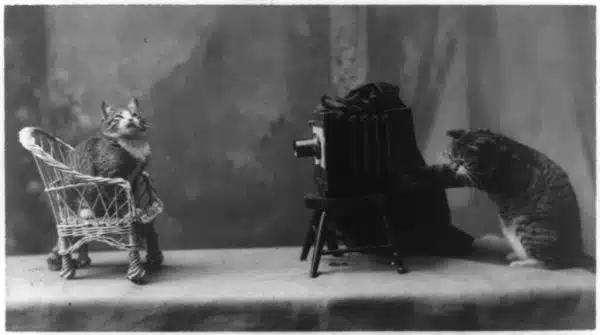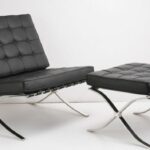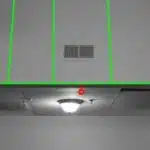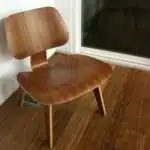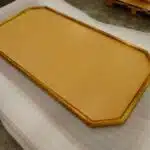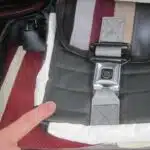Reupholstering a chair seat can be a daunting task for many, especially those who have never attempted it before. However, with the right tools, materials and techniques, anyone can transform an old or worn-out chair into a beautiful piece of furniture that can last for years to come. As an upholstery expert and instructor, I have seen many individuals struggle with this process due to lack of proper guidance. In this article, I will provide step-by-step instructions on how to reupholster a chair seat like a pro.
Before we dive into the process of reupholstering a chair seat, it is important to understand why it is necessary in the first place. Over time, chairs tend to lose their cushioning and support due to wear and tear from daily use. The fabric covering the seat may also become stained or faded, making the chair look unattractive and outdated. By reupholstering the chair seat, you not only restore its comfort and functionality but also give it a fresh new look that complements your décor style. Whether you are doing it as a DIY project or considering it as an additional service for your upholstery business, these tips and tricks will help you achieve professional-looking results every time.
Understanding The Importance Of Reupholstering
As an upholstery expert, I have seen the importance of reupholstering chairs firsthand. Not only does it give your furniture a fresh new look, but it also provides numerous benefits that many people may not be aware of. For instance, reupholstering can save you money by extending the life of your chair rather than buying a new one. It is also a sustainable option as it reduces waste and allows you to keep using a piece of furniture that would otherwise be discarded.
The cost of reupholstering a chair seat can vary depending on several factors such as the size, shape, and condition of the chair. However, when compared to buying a brand new chair, reupholstering is often more cost-effective in the long run. Additionally, choosing high-quality fabric for reupholstering can further increase its longevity and make it worth the investment.
Reupholstering not only benefits your wallet but also has positive effects on the environment. By keeping furniture out of landfills and reducing waste, you are contributing to sustainability efforts. When considering whether to reupholster or replace your chair seat, keep in mind these benefits and consider how they align with your values and priorities. Next, let’s move onto choosing the right fabric for your project.
Choosing The Right Fabric
When it comes to reupholstering a chair seat, choosing the right fabric is crucial. There are many factors to consider when selecting a fabric, including durability, texture, and pattern. The first thing to consider is the intended use of the chair. If it will be used frequently, a durable fabric such as cotton or linen may be best. For chairs that will be used less often, silk or other delicate fabrics can be used.
Another important factor to consider is the texture of the fabric. Smooth fabrics such as leather or velvet are great for formal settings while rougher textures like burlap work better in rustic settings. Additionally, fabric patterns should also be taken into account when selecting a material for your chair seat. An intricate pattern might not work well on a small seat because it could get lost or become overwhelming.
Color coordination is also key when selecting upholstery fabric for your chair seat. Consider the colors that already exist in the room where the chair will be placed and choose a color that complements them. Alternatively, if you want to make your chair a focal point in the room, choose a bold color that contrasts with other elements in the space.
Now that you have an idea of what type of fabric you need for your reupholstering project let’s move forward into gathering all the necessary tools and materials needed for this process.
Gathering The Necessary Tools And Materials
When it comes to reupholstering a chair seat, choosing the right fabric is only one part of the process. In order to ensure success, it’s important to also choose the right tools and source the proper materials. This may seem like common sense, but you’d be surprised how many upholsterers overlook these crucial steps.
Choosing the right tools can make all the difference in your upholstery project. Not only will it make your job easier, but it will also ensure that your finished product looks professional and polished. Some essential tools include a staple gun, fabric scissors, upholstery needles, and a rubber mallet. It’s important to invest in high-quality tools that will last for years to come.
Sourcing the proper materials is equally important when reupholstering a chair seat. You want to choose fabrics that are durable and easy to clean, while still fitting your desired aesthetic. Some popular options include cotton, linen, and synthetic blends. Don’t forget about other materials such as foam padding or batting to add comfort and support to your newly upholstered seat.
- A sturdy work table or surface
- A measuring tape or ruler
- Plentiful supply of staples
- A seam ripper for removing old fabric
Now that you’ve gathered the necessary tools and materials, it’s time to move on to removing the old fabric from your chair seat.
Removing The Old Fabric
- To begin the reupholstery process, it is essential to unscrew the frame of the chair seat.
- With the frame removed, you should then locate the staples holding the fabric and carefully remove them.
- To further remove the old fabric, begin to loosen the fabric from the frame using a flathead screwdriver.
- Take your time when loosening the fabric as to avoid ripping or tearing it.
- It may be helpful to use a pair of needle nose pliers to grip and remove fabric that has become tangled in the frame.
- With the old fabric removed, you are now ready to begin reupholstering the chair seat.
Unscrewing The Frame
Before any reupholstery work can begin, it is important to remove the old fabric first. This process requires careful attention to detail, especially when unscrewing the frame of the chair. When removing screws, it’s best to use a screwdriver that fits tightly into the screwhead to avoid stripping any of the screws. Once all the screws have been removed, gently separate the seat from the frame.
However, before you start removing screws, you should take note of the frame stability. If the frame appears wobbly or unstable, it may need some repair before proceeding with reupholstery work. Check for any loose joints or broken pieces and fix them accordingly. It’s important to ensure that your chair is structurally sound before moving on to reupholstering.
When removing screws from your chair seat frame, take note of where each one is located as this will help you later when putting everything back together. It’s also important to keep all of your screws in a safe place so they do not get lost during this process. With patience and care, you can successfully remove all of your chair seat fabric and prepare for a new fabric installation without damaging your furniture piece.
Removing Staples
Once all the screws have been removed and the frame has been repaired if necessary, it’s time to remove the old fabric. One of the most challenging parts of this process is removing staples that are holding the fabric in place. There are several staple removing techniques that can be used depending on the type of chair and staples being used.
One common technique is to use a staple remover tool which has a sharp end that can grab onto individual staples and pull them out. Another option is to use pliers or a flathead screwdriver to gently pry the staples out one by one. It’s important to be careful not to damage the frame or any other parts of the chair during this process.
Having the right tools for staple removal is crucial in ensuring that you don’t accidentally damage your furniture piece. As an upholstery expert, it’s recommended to invest in high-quality staple removers or pliers with a comfortable grip, as this will make your work easier and less tiring. Once all staples have been removed, you can proceed with adding new padding or foam before installing your new fabric for a fresh look.
By taking your time with removing old staples and using proper tools and techniques, you can successfully prepare your chair seat for reupholstering without damaging any parts of your furniture piece. Remember to always prioritize safety when working with sharp tools and contact an upholstery professional if you’re unsure about any step in this process.
Loosening Fabric
Now that all the screws have been removed, and the frame has been repaired if necessary, it’s time to remove the old fabric. One of the most challenging parts of this process is removing staples holding the fabric in place. We have discussed different staple removal techniques in our previous subtopic, but once all staples have been removed, it’s time to loosen the fabric.
When removing the old fabric, you may notice that some areas are still attached to the chair frame. This could be due to glue or adhesive used during manufacturing. To loosen these areas, use a heat gun or hairdryer to warm up the glue or adhesive. If there are no adhesives present, gently pull on the fabric and smooth out any wrinkles as you go along.
It’s important not to rush through this process as it can affect how your new upholstery will look when installed. Take your time smoothing out any wrinkles or creases as they may show through once your new fabric is in place. Once you have successfully loosened all areas of your old fabric and smoothed out any imperfections, you are now ready to proceed with adding new padding or foam before installing your new fabric for a fresh look.
Assessing The Condition Of The Padding
Before reupholstering a chair seat, it is essential to assess the condition of the padding. It is because padding plays a crucial role in providing comfort and support while sitting on a chair. Identifying wear and tear on the padding will help you determine whether it needs replacement or repair.
To assess padding condition, take off the fabric covering the seat. Look for any lumps or bumps that may indicate unevenness or lack of support. Gently press on various parts of the seat to feel for any dips or sags in the padding. If there are noticeable problems with your chair’s padding, then it’s time to consider your options for replacements.
There are several options available when considering new padding for your chair. Foam is an excellent choice for providing firm yet comfortable support, while batting and cotton offer a softer feel but may compress more quickly over time. Down feathers provide maximum softness but require regular fluffing to maintain their shape. Carefully consider these options before deciding which type of padding to use for your newly upholstered chair seat.
Moving forward with reupholstering your chair seat will depend on whether replacing or repairing the padding is necessary. In either case, understanding how to identify wear and choosing from available options will ensure that you can provide long-lasting comfort and support through your upholstery work.
Replacing Or Repairing The Padding
As the padding of your chair seat wears out, it can become uncomfortable and unattractive. To remedy this, you can either replace or repair the padding. Replacing the padding may be a more expensive option, but it can provide longer-lasting comfort and a better overall appearance.
There are several padding replacement techniques that you can use to restore the comfort of your chair seat. One technique involves using foam cushions cut to size, while another uses batting wrapped around a foam core. The choice of technique depends on personal preference and budget, as well as the type of chair being upholstered.
If cost is a concern, there are also cost-effective padding alternatives that you can consider. For example, recycled materials such as old towels or clothing can be used to stuff cushions and provide adequate support. However, keep in mind that these options may not last as long or provide as much comfort as traditional padding materials.
When replacing or repairing padding, take care to ensure that it is properly secured and shaped to fit the contours of the seat frame. This will help prevent sagging or shifting over time and maintain optimal comfort for years to come. Once your new padding is in place, you can move on to measuring and cutting the new fabric to complete your reupholstering project.
Measuring And Cutting The New Fabric
After replacing or repairing the padding on your chair seat, it’s time to move forward with choosing the fabric for your reupholstering project. Choosing fabric is just as important as any other part of the process. It’s an opportunity to add style and personality to the piece while ensuring durability and comfort.
When selecting fabric for your chair seat, consider factors such as color, pattern, texture, and durability. While it may be tempting to choose a bold print or bright color, keep in mind that you’ll want the end result to complement the overall aesthetic of the room. Additionally, upholstery techniques will differ depending on the type of fabric you choose. For example, thicker fabrics such as leather or velvet require more precision when cutting and sewing.
Once you’ve selected your ideal fabric, it’s time to measure and cut it to size for your chair seat. This can be done by creating a pattern using newspaper or muslin fabric. Simply lay out the material over the chair seat and trace around it with a marker or chalk. Cut along these lines with sharp scissors or a rotary cutter. Remember to leave enough excess material on all sides so that you can tuck it tightly under the seat cushion and staple in place.
Next up: creating a pattern for upholstery! Stay tuned for our next section where we’ll dive deeper into this step-by-step process. In the meantime, keep in mind that reupholstering a chair seat takes patience and attention to detail—but with the right tools and techniques, anyone can achieve professional-looking results at home.
Creating A Pattern For Upholstery
Creating a Pattern for Upholstery is like sketching a blueprint before building a house. It is an essential step that sets the foundation for the entire project. A pattern allows you to visualize how the fabric will look on the chair seat and determine how much material you’ll need.
To create a pattern, you will need a few tools, including paper, pencil, measuring tape, and scissors. Here are five steps to guide you through this process:
- Remove the old fabric from the chair seat and use it as a template to cut your new fabric.
- Measure the length and width of the seat cushion, adding an inch or two to each measurement for seam allowances.
- Lay your paper over the cushion and trace its outline onto the paper.
- Cut out your pattern along the traced line.
- Place your pattern over your desired fabric patterns. Cut out your fabric using this pattern.
Upholstery techniques can be complex; however, creating a pattern is relatively straightforward. With patience and attention to detail, anyone can create their own upholstery patterns confidently. Once you have completed this step, it’s time to move onto securing the new fabric to the seat without compromising its finish or appearance.
Securing The New Fabric To The Seat
- When cutting the new fabric for the seat of the chair, ensure that it is cut slightly larger than the actual size of the seat so that it can be trimmed to fit.
- Before trimming the excess fabric around the seat, ensure that all pleats and gathers are in place and secure.
- After trimming, the excess fabric should be secured with tacks or staples around the perimeter of the seat.
- To ensure a comfortable and even seating surface, add a layer of padding to the seat prior to securing the fabric.
- When adding the padding, be sure to evenly distribute it and secure it in place with tacks or staples.
- Once the padding is secure and the fabric is in place, the seat should be ready to be reupholstered.
Cutting
When it comes to reupholstering a chair seat, cutting is a crucial step in securing the new fabric. Cutting techniques are important in achieving clean and precise lines that will give the finished product a professional look. To ensure accuracy, it is essential to use the right scissors for the job. A pair of sharp fabric scissors with long blades is ideal for cutting through multiple layers of fabric.
When selecting scissors, it is important to consider the type of fabric being used. For thicker fabrics such as canvas or denim, heavier duty scissors may be necessary. On the other hand, lighter fabrics such as silk or cotton can be cut with finer scissors. It is also recommended to have a separate pair of scissors designated solely for cutting fabric to prevent dulling or damage.
Before cutting the new fabric, make sure to measure and mark each piece accordingly. Use a ruler and chalk or tailor’s pencil to mark lines where cuts should be made. Double-check measurements before making any cuts to avoid mistakes that could result in wasted material or an ill-fitting cover.
In conclusion, taking careful consideration in selecting the right scissors and using proper cutting techniques is vital when reupholstering a chair seat. By following these steps, one can achieve a polished and professional-looking finished product that will last for years to come.
Trimming
After cutting the new fabric, it’s time to move on to securing it onto the seat. However, before doing so, it is important to choose the right trim for the job. There are many different types of trims available, such as piping, gimp, and fringe. Choosing the right trim can add a decorative element to the chair while also concealing any raw edges. It is important to consider the style of the chair and the overall look desired when selecting trim.
Techniques for applying trim vary depending on the type of trim being used. Piping, for example, can be sewn onto the edge of the fabric before attaching it to the chair seat. Gimp or braid can be glued onto the edge of the fabric using a hot glue gun or adhesive tape. Fringe can be sewn onto the bottom edge of a skirted cover or along any exposed edges. When applying trim, it is important to take care in ensuring that it is straight and even throughout.
Trimming is an important step in achieving a polished and finished look when reupholstering a chair seat. Choosing the right trim and employing proper techniques will add both function and beauty to your project. With careful attention paid to each detail, one can create a beautifully upholstered chair that will serve its purpose for years to come.
Padding
Before securing the new fabric onto the seat, it is important to consider padding options. Padding not only provides comfort but also helps to shape and define the final look of the chair. There are various padding materials available such as foam, cotton batting, and horsehair. The type of padding chosen will depend on personal preference as well as the desired level of comfort.
Foam is a popular choice for padding due to its versatility and durability. It comes in different densities and thicknesses, allowing for customization based on individual needs. Cotton batting is another option that provides a softer feel while still maintaining shape. Horsehair, although more expensive, offers superior shaping capabilities and longevity. Regardless of the material chosen, proper maintenance is crucial in ensuring that the padding remains comfortable and supportive for years to come.
Maintaining the quality of padding involves regular fluffing and reshaping to prevent compression and sagging over time. For foam padding, avoid using harsh chemicals or solvents that can break down the material. Instead, use a mild detergent and water solution when cleaning. For cotton batting or horsehair, avoid exposure to moisture or humidity which can cause mold or mildew growth. By choosing appropriate padding materials and following proper maintenance techniques, one can ensure that their reupholstered chair seat not only looks beautiful but also remains comfortable for years to come.
Creating Pleats And Tucks
Pleating techniques are essential for giving your reupholstered chair seat a professional look. There are different methods you can use, depending on the style of your chair and the fabric you’re using. One common technique is the knife pleat, which involves folding the fabric in one direction to create sharp creases. You can also create box pleats, which involve folding the fabric in both directions to form a square shape.
When it comes to tuck placement, there are several factors to consider. First, you should decide how many tucks you want to create and where they will be placed. Generally, tucks are spaced evenly around the perimeter of the seat. However, you may want to place them closer together or farther apart depending on your design preferences.
Once you’ve created your pleats and tucks, it’s time to move on to adding finishing touches. This might include attaching decorative trim or buttons to further enhance the appearance of your newly upholstered chair seat. It’s important to take care when adding these final details so that they don’t detract from the overall look of your work. With a little patience and attention to detail, you can transform an old chair into a beautiful piece of furniture that will last for years to come.
Adding Finishing Touches
- Adding piping to a chair seat is a great way to add a touch of sophistication to the piece and create a finished look.
- To attach the piping, you will need an upholstery needle, upholstery thread, and a length of piping.
- Nailhead trim is another great way to finish off a chair seat and add an extra layer of detail.
- To attach the nailhead trim, you will need a hammer, upholstery tacks, and a strip of nailhead trim.
Adding Piping
Color choices and sewing techniques are essential when adding piping to a reupholstered chair seat. Piping is a decorative feature that can add both contrast and texture to a chair’s appearance. It also serves as a protection for the edges of the fabric, preventing fraying and wear over time. When selecting piping, consider the color scheme of your chair and choose a complementary or contrasting hue. It must also be durable enough to withstand regular use.
To create piping, you will need to utilize specific sewing techniques. Begin by cutting bias strips from your chosen fabric, then fold them in half lengthwise with the right sides facing outwards. Attach a zipper foot to your sewing machine before placing the cord into the center crease of the strip and carefully stitching it in place using a straight stitch. Finally, trim down any excess fabric and sew the piping onto your chair seat by sandwiching it between two layers of fabric and stitching around the perimeter.
Overall, adding piping is an excellent way to give your reupholstered chair seat that extra touch of elegance. With careful consideration of color choices and proper sewing techniques, you can ensure that your piping not only looks beautiful but also protects your chair for years to come.
Adding Nailhead Trim
Adding nailhead trim is another fantastic way to give your reupholstered chair seat that finished and polished look. Nailhead trim is a decorative feature that adds a touch of sophistication and elegance to any piece of furniture. It can be used on the edges of the fabric or as a decorative accent on different parts of the chair like the backrest, armrests, or legs. With some DIY tips and design inspiration, you can easily add nailhead trim to your reupholstered chair seat and elevate its overall appearance.
To add nailhead trim to your chair seat, begin by measuring and marking where you want to place the nails using a pencil or chalk. Next, use a rubber mallet or hammer to gently tap the nails into place along the marked lines. The spacing between each nail is essential for achieving an even and professional look; therefore, it’s best to use a template or ruler as a guide. You can also choose from different types of nails such as brass, silver, or blackened steel depending on the desired aesthetic.
When adding nailhead trim, it’s important to take into account your chair’s style and color scheme so that it compliments rather than detracts from its overall appearance. For instance, if you have a traditional or vintage-style chair with intricate woodworking details or tufted upholstery, then adding nailheads in straight lines could clash with its design elements. Instead, consider using them in curved lines or diamond patterns that follow the curves of the chair’s shape. Additionally, if you have chosen bold-colored fabric for your upholstery job, consider using neutral-toned nails for contrast while still maintaining an elegant finish.
In summary, adding nailhead trim is an easy way to enhance your reupholstered chair seat’s overall look by giving it a finished touch of elegance. By following proper DIY tips for placement and design inspiration that suits your style preference and color scheme choice – you will achieve a professional and polished appearance that will impress your guests for years to come.
Reattaching The Seat To The Chair
After reupholstering the seat of your chair, it’s time to reattach it. There are various securing methods, but the most common is using screws and bolts. Before starting, make sure you have all the necessary tools such as a screwdriver, drill, and pliers.
Firstly, turn the chair upside down and remove any old screws or bolts from the seat frame. Place the newly upholstered seat on top of the frame and align it correctly. Then, use screws or bolts to secure the seat onto the frame. If there are no holes in your seat frame, use a drill to create them before attaching.
Once all screws or bolts have been tightened securely, flip your chair back over and test for stability by sitting on it. If everything feels sturdy and secure, then you have successfully reattached your chair seat. However, if you notice any wobbling or instability when sitting on it, then troubleshooting common issues may be necessary to ensure a proper fix.
Moving forward into troubleshooting common issues after reattaching your seat to the chair requires some attention to detail. By identifying potential problems early on such as loose screws or uneven alignment of the seat frame can save you from future headaches. Keep reading for tips on how to troubleshoot these issues and ensure a stable and comfortable seating experience.
Troubleshooting Common Issues
Just like a ship encountering rough waves, reupholstering a chair seat can also face its share of challenges. The process of fixing seams and dealing with uneven padding can be frustrating for novices. But worry not, as an upholstery expert, I will guide you through the process of troubleshooting common issues.
Fixing seams is one of the most common problems that arise during reupholstering. The new fabric may not fit perfectly, or it could be that your sewing technique needs some honing. To fix this issue, start by removing the stitches on either side of the seam using a seam ripper. Once you have opened up the seam, adjust the fabric to fit correctly and sew it back in place using a sewing machine or needle and thread.
Uneven padding is another issue that may occur when reupholstering your chair seat. This problem usually arises when you don’t take enough care to ensure that the padding is evenly distributed before attaching the new fabric. To rectify this problem, carefully remove the staples holding down the fabric and check if there are any uneven areas in your padding. If so, add more foam or cotton batting until it appears level, then staple back into place.
Maintaining your newly upholstered chair over time is crucial if you want it to last for years to come. In our next section, we will discuss some simple steps you can take to ensure that your chair stays in top condition even after years of use.
Maintaining The Upholstery Over Time
After troubleshooting any issues with your chair upholstery, it’s important to focus on maintaining it over time. Upholstery cleaning is a crucial part of this maintenance. Regularly vacuuming your upholstered furniture helps remove dirt and debris that can cause wear and tear over time. You can also use a soft-bristled brush to gently scrub any stains or spills that may occur.
Preventing wear and tear is another key aspect of maintaining your chair’s upholstery. One way to do this is by rotating the cushions regularly to distribute the weight evenly across the entire surface. Another tip is to avoid placing upholstered chairs in direct sunlight, as this can cause fading and discoloration. Additionally, be mindful of any sharp objects that could potentially snag or tear the fabric.
Incorporating these tips into your regular upholstery maintenance routine can help prolong the life of your furniture and prevent the need for frequent reupholstering. In the next section, we will discuss some helpful tips for successful reupholstering so you can give new life to worn-out chairs in your home or office.
Tips For Successful Reupholstering
When it comes to reupholstering a chair seat, there are several tips that can help ensure a successful outcome. One of the most important considerations when embarking on this project is choosing the right colors and fabrics. When selecting fabrics, it’s essential to opt for those that are durable and easy to clean. Fabrics such as cotton, wool blends, and microfiber are great choices as they are resilient and can withstand everyday wear and tear.
Another tip for successful reupholstering is taking adequate time to plan out the entire process. It’s crucial to assess the condition of the chair and determine what needs to be done before starting the project. This assessment should include examining the frame, assessing the stuffing or padding, and checking for any loose joints or screws. Once you’ve evaluated everything, you can then decide which parts need fixing or replacing.
In addition to these tips, it’s also crucial to invest in quality tools and materials before beginning your project. Some of these essential tools include a staple gun, fabric scissors, needle-nose pliers, a seam ripper, and upholstery thread. Investing in high-quality materials such as foam padding and webbing will ensure that your reupholstered seat lasts for years without needing repair or replacement. By following these tips, you’ll be able to successfully reupholster your chair seat with ease!
Conclusion
Reupholstering a chair seat is a great way to breathe new life into an old piece of furniture. It can be a fun and rewarding DIY project, but it’s important to take the time to do it right. Choosing the right fabric, gathering the necessary tools and materials, and properly removing the old fabric are all key steps in the process.
When reupholstering, think of your chair as a blank canvas waiting for a new masterpiece to be created. Think about your vision for the space where the chair will reside and choose fabrics that complement that vision. Take care to use quality materials and tools throughout the process to ensure longevity and durability.
One important thing to keep in mind is that reupholstering is not just about making your chair look good – it’s also about ensuring its structural integrity. Just like how we need strong bones to support our bodies, chairs need sturdy frames and padding to support those who sit in them. By taking care during each step of the process, you’re not only creating something beautiful but something that will last for years to come.
In conclusion, reupholstering a chair seat can seem daunting at first, but with patience and attention to detail, it can be done successfully. Remember to choose quality materials and tools, assess padding condition carefully, troubleshoot common issues effectively, and maintain upholstery over time once finished. Upholstery is truly an art form; think of yourself as an artist who is creating something beautiful while repairing and strengthening an object meant for daily use. By doing so you’ll have not only saved money on purchasing a new piece of furniture but also added value through creating something both functional and unique.
Image Credits
- “A cat is posed seated on a chair in front of another cat operating a camera.” by Beverly & Pack (featured)

